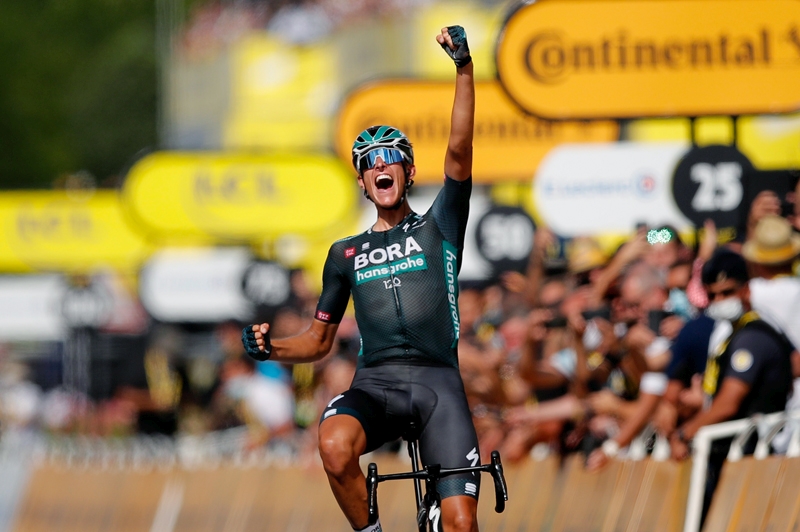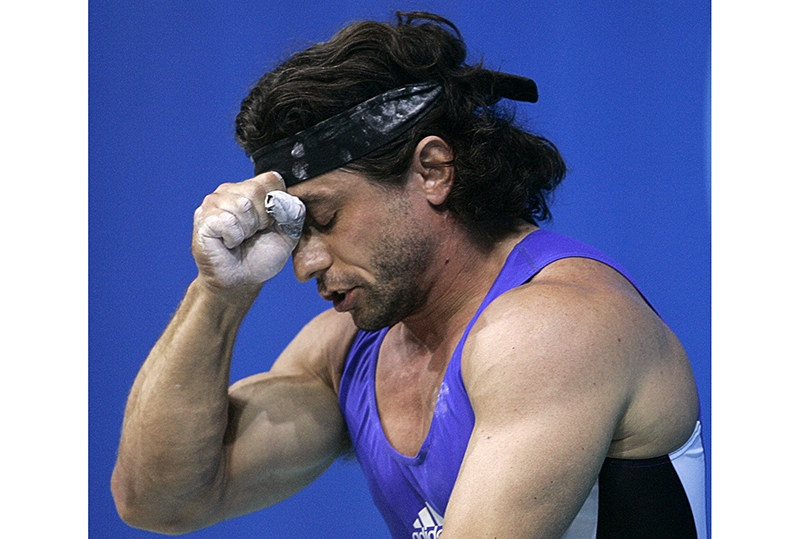Understanding imagery and self-hypnosis
Mental imagery is the process by which we create or recreate experiences in the mind using information stored in our memory. You engage in imagery every time you have a dream, but this is an unstructured form of imagery. Structured imagery is aided by a vivid imagination, and the more control athletes have over their imagination, the more they are able to control their performance. Athletes vary greatly in their imagery ability and in the senses they engage during imagery(1).
Some like to ‘feel’ movement internally – a process known as kinaesthesis – while others like to see their performance unfold as if watching the playback from a headcam – this is known as visual-internal imagery. Another frequently used type of imagery is referred to as visual-external imagery – seeing yourself perform from a distance as though watching from a grandstand or viewing video playback. With practice, it is possible to engage all of the senses at once or synaesthetically to create really vivid experiences.
Research shows that the more clearly you are able to experience mental images and the more accurately you can control your imagined movements, the more likely you are to translate the images into superior performance(2). As a sport psychologist, I often train athletes to use imagery in a structured way to help revive or create the ultimate performance. Below is a brief case study of a simple application of imagery that I used with a young rugby union player a few years ago.
Self-hypnosis
Self-hypnosis is a state of heightened awareness and relaxation that is self-induced. It is used by athletes in a variety of sports as a stress management technique and can also accelerate many aspects of mental training. I often use it hand-in-hand with imagery whereby I get athletes to relax using self-hypnosis and then to engage in sport-specific imagery. There is nothing mystical about hypnosis; just think of it as reaching a deep state of relaxation that is extremely pleasurable.
You may well have experienced something similar to a hypnotic state when driving a car along a very familiar route. Your detailed knowledge of the route means that you drive the car automatically – with very little conscious effort. In such a state, when you are not thinking about the action of driving, it is very easy to miss your exit on the motorway – a phenomenon known as highway hypnosis.
A common misconception that people have about hypnosis is that it must involve a deep state of trance, in which you are oblivious to what is going on and have absolutely no control over your actions. In actuality, you have full control and are able to tap the power of the right brain – the creative side – far more effectively than in a normal state of wakefulness.
The body of knowledge
Research shows that if you imagine yourself performing any sports skill, this causes electromyographical (EMG) activity in the musculature resembling that which would occur during the physical execution of the skill(3). For example, if you were to imagine yourself flexing your left arm from the elbow joint, it would be possible to monitor activity in the biceps muscles even though no physical movement occurs(4). However, the pattern of activation during imagery does not match precisely the pattern of EMG recorded during actual movement.
Despite differences in the pattern of activation, imagery has the effect of priming muscles for subsequent physical action, and this clearly has potential benefits for the performance of many sports skills. It is also evident that the neural impulses passed from the brain to the muscular system during imagery may be retained in memory almost as if the movement had actually occurred(2). The implication of this is that physical skills may be improved even during periods of injury when physical practice is not possible. Moreover, there is growing evidence to suggest that a combination of imagery and relaxation can accelerate the rehabilitation process following injury or surgery(5).
It has been suggested that visual-internal imagery (the ‘headcam perspective’) comes naturally to us because it represents how we normally experience the world. This means that external imagery often has the potential to add something new. For example, researchers have shown that a visual-external kinaesthetic perspective (ie seeing yourself from a distance and feeling movement) is superior for learning and retention of new sports skills, especially those that are technically complex such as throwing events in athletics, ice dance routines or gymnastics sequences(6).
However, anecdotal evidence suggests that visual-internal imagery tends to aid the kinaesthetic sensations to a greater degree than visual-external imagery(7). Given that it can elicit greater bodily activation, the implication is that an internal perspective is superior when you wish to psych up or prime yourself for competition. Both internal and external perspectives have their merits and you should aim to combine all of the senses for maximum effect.
An experiment we conducted at Brunel using task-relevant imagery prior to an isometric muscular endurance task showed that imagery combined with motivational music was more effective than using imagery only, music only, or a no-imagery/music control condition (8). Carefully selected music complements imagery via the extra-musical associations it creates or through evoking positive memories that facilitate performance(9).
Imagery establishes a mental blueprint for sports skills and tactical ploys(10). Indeed, a popular acronym used by sport psychologists is ‘Wysiwyg’(11) which stands for What You See Is What You Get. Research has shown repeatedly that task-relevant imagery (eg mental practice) combined with physical practice is more effective than physical practice alone(2). Moreover, mental practice conducted in a hypnotic trance is far more lifelike and intense than conventional mental practice(12).
Imagery techniques for you and your athletes
Learning skills – one of the best uses of imagery comes during the learning or honing of a sports skill. The more images that can be used to replace verbal explanation or reasoning in learning, the more simply and effectively techniques will be mastered, and the faster learning will progress. Whether you are in the position of teacher or learner, imagery has a significant part to play in communicating and understanding skills. If you can capture the heart of a skill in a simple image, practice is made far less arduous.
A particularly good way to develop your skills is thorough recreating the image of an expert in your sport. I often ask athletes to observe a top performer they really admire – say Roger Federer if they’re a male tennis player – and then to imagine themselves as that performer in full flow. I increase the intensity of the experience through progressively adding each of the senses.
For example, to recreate the experience of serving, the player is asked to imagine the feeling of stretching up and swinging the racket, the sound of the ball as it makes contact with the sweet spot of the racket, the smells in the air and the taste of sweat, in addition to seeing himself perform the skill.
Getting psyched-up – under-arousal is just as much a limiting factor to peak performance as is over-excitement and high anxiety. Thankfully, the power of your imagination can also be used to get you feeling ‘up’ for a competition or training session. Before you start the exercise (see box, below), sit in a comfortable chair, relax by closing your eyes and breathing slowly and deeply, and allow the tension to leave your muscles as you exhale. Spend a few minutes doing this until you feel really relaxed.
Capturing performance ‘in the zone’ – on those rare occasions when you’re performing in ‘the zone’, it’s advisable to try to ‘capture in a bottle’ all of the mental aspects of your performance. This will help you to recreate that optimal mindset in the future. Use a notepad immediately following your next successful performance to jot down everything that you sensed.
Practising ‘what if’ scenarios – One of the most useful applications of imagery is to use a team’s collective set of imaginations to come up with things that might go wrong – the so-called ‘what if’ scenarios. Players can then systematically devise strategies for each possible ‘what if’. These strategies are discussed in detail and rehearsed mentally. Oft cited ‘what ifs’ for which sportspeople adapt strategies include ‘What if we suffer a bad refereeing decision?’, ‘What if our best player is sent off in the first 15 minutes?’, ‘What if we get delayed and arrive at the competition venue an hour late’, ‘What if the pitch is waterlogged?’ and so on. In individual sports, I use this exercise with an athlete accompanied by their entire support team – coach, manager, agent, physiotherapist, etc. Athletes routinely report that this application of imagery can make a critical difference in the heat of competition.
A script for self-hypnosis
This is one of the most popular self-hypnosis techniques employed by athletes. It aims to help you distance your mind from the here and now and place you in a setting that you associate with relaxation and inner calm. It may be useful for the first couple of times that you or your athletes try it to print out the instructions and have someone read them out. However, the script is written so that it can be recorded as an MP3 file or onto an audiocassette for use by the athlete alone. Where you see continuation marks (...) leave a pause for a few seconds and remember to speak slowly and clearly throughout.
A particularly good time to use imagery in the form of mental rehearsal is just before you return to a state of full wakefulness at the end of the
self-hypnosis exercise. The heightened state of awareness achieved during self-hypnosis will allow you to enjoy extremely vivid mental rehearsal that will programme the pattern of muscular activity that is specific to your sport. When golfing legend Tiger Woods feels anxious, he gets his mental coach Jay Brunza to hypnotise him. Woods is then able to engage in positive imagery, block out any nagging doubts and focus on the task at hand. Hypnosis works well as a stress management tool and as a precursor to mental rehearsal.
Summary
This article has outlined ways in which you can use the power of your imagination and a heightened state of awareness to develop skills that will improve sporting performance. You should try to follow formal mental practice with physical practice of the same skill as soon as possible. This approach has been shown to be particularly effective in developing superior sports skills. The practice of mental skills such as imagery and self-hypnosis will enable you or your athletes to add an entirely new dimension to your training programme that will certainly pay dividends in the long run. Remember that if you can see it, you can create it; if you can feel it, you can perform it; and if you can imagine it, you can achieve it!
Dr Costas Karageorghis is a reader in sport psychology at Brunel University, West London where he also manages the athletics club. He has published extensively in the field of sport and exercise psychology and has been a BASES accredited sport psychologist for 10 years.
References
1. J Psychophysiology 2004; 18:190-198
2. Advances in Sport Psychology (2nd ed), Champaign IL: Human Kinetics, 2002:405-439
3. Motor Control and Learning, Champaign, IL: Human Kinetics, 1999
4. J Sport Exerc Psych 2002; 24:151-167
5. Rehabilitation Psych 46:28-43
6. Brit J Psych 86: 169-180
7. Percept Mot Skills 1984;59:899-906
8. Proceedings of the 2001 World Congress on Sport Psychology, Skiathos, Greece 2001; 4:37-39
9. Aus J Psych; in press
10. J Applied Psych 1994;79:481-492
11. Ultra-fit 6:30-33.
12. Sport Hypnosis, Champaign, IL: Human Kinetics, 2000










